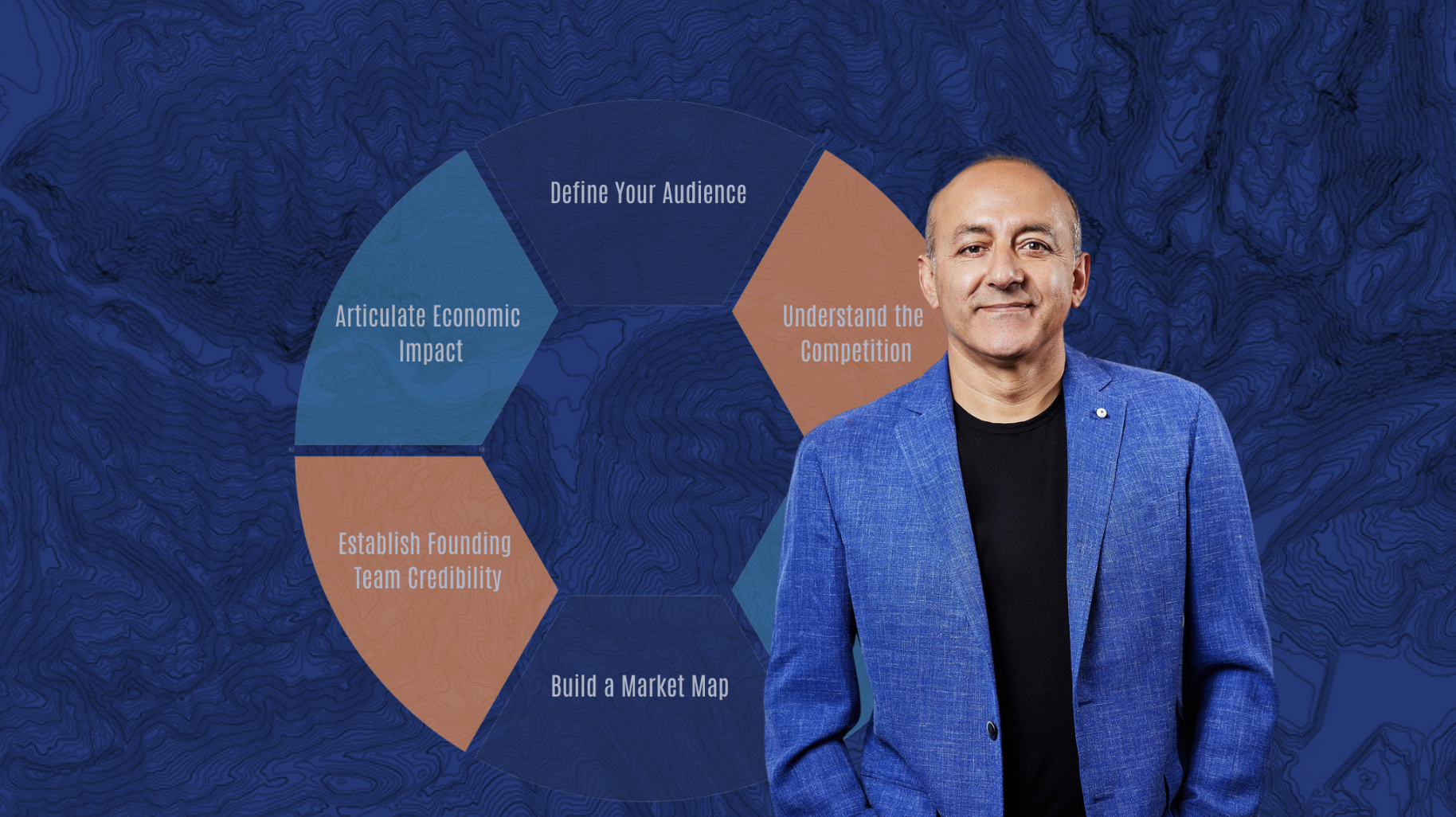Why is hiring good marketing leadership important to your business?
Marketing leadership helps you maximize the revenue effect of your marketing spend. A good marketing leader will set your organization’s strategies and direct spending to ensure you’re marketing with a purpose.
Good marketing leadership will help early-stage B2B companies:
-
Build brand awareness. They establish the business in the market. This can be particularly important for companies to position and carve out a niche in a crowded or competitive market.
-
Generate leads and find potential customers. This can be particularly important for companies starting out and may not have a large customer base.
-
Demonstrate expertise and thought leadership. This can help establish credibility and build trust with potential customers.
-
Differentiate from competitors. Good marketers identify and communicate the unique value that a startup offers.
-
Drive sales. Ultimately, marketing helps drive sales and grow your business. Marketing can help early B2B companies find and convert new customers by reaching potential customers and building brand awareness. For most companies, products won’t suffice to drive demand, and they need marketing and revenue efforts to drive business.
The first marketing hire needs to have a revenue mindset. You can hire an amazing communications person, but they won’t be the best thing for your B2B business in the early stage.
A poor marketing leader will set you back in building the foundation of your GTM and repeatability. A good strategic marketing leader builds a repeatable and scalable go-to-market motion. It’s a requirement of a scalable business, and if your leadership can’t make it, you need to find someone who will.
What “marketing mix” should you look for in your first head of marketing?
There are three pillars of marketing that any leader should blend. Different candidates excel in different areas, and every candidate should have some expertise in all three pillars. Evaluate your company’s situation (now and where you hope to be in 2-3 years) and find the right combination of these pillar skills:
-
Performance marketing: digital marketing that focuses on delivering specific outcomes, like sales or leads. Performance marketing campaigns are typically driven by data and analytics and aim to optimize results based on the performance of specific marketing channels or tactics. It involves continuous testing and optimization to maximize ROI; tests include A/B testing different ad copy, targeting different audience segments, or testing different landing pages.
-
Product Marketing: bringing a product to market and communicating its value to potential customers. Product marketers are responsible for understanding the market and competition, identifying target customers, and developing messaging and positioning for the product. It involves a range of activities, including market research, competitive analysis, product positioning, pricing strategy, and go-to-market planning. Product marketers work closely with other teams, such as product management, sales, and marketing, to ensure the product is successful in the market.
-
Corporate Marketing / PR / Communications: marketing a company or organization as a whole rather than marketing specific products or services. Corporate marketing aims to build the overall brand and reputation of the company, and it can involve a wide range of activities, such as public relations, corporate branding, corporate social responsibility (CSR) initiatives, and employee communication.
For most early-stage startups, emphasize demand and product marketing skills. At most early-stage B2B startups, demand gen and product marketing skills will be more crucial than Brand and Communications. But the particular mix you need will depend on the state and context of your company.
Make sure the candidate is a good fit for a startup. The leader must have early-stage startup experience. You can be a phenomenal leader at a late-stage company and fail magnificently at a startup because you can’t adapt to the pace and lack of resources.
How do you decide what level of seniority and experience you should look for in your first marketing hire?
Some companies can hire a more junior “doer,” while others need a strategic marketing leader. The level of experience and seniority you need in your first marketing hire depends upon the skills and preferences of the founding team and the state of the go-to-market engine.
| Factor | A “doer” might work if… | Hire a leader first if… |
| Founder marketing experience | A founder has experience in marketing | The founder(s) are technical and lack strategic marketing experience |
| Founder desire to lead marketing | A founder is willing and interested to be involved in marketing strategy | The founder(s) don’t want to allocate their time to marketing |
| State of the marketing foundation | Fundamentals like positioning, messaging, and competitor analysis are in place | You haven’t yet built the marketing foundation (you’ll end up wasting money on inefficient campaigns) |
| Revenue success to date | You have identified repeatable ways to build a pipeline | You haven’t yet found scalable ways to generate leads and opportunities |
What can you cover with a fractional CMO or other marketing leadership consultant?
Outside resources can buy time before hiring a first Head of Marketing. A fractional CMO can help with things like messaging and positioning workshopping, defining an ICP, or building the first few GTM campaigns. The founders can handle these before hiring a full-time marketing leader, but if they find it challenging, then outside resources will be helpful.
One-person consultants are better than agencies. That person can get to know your business and advise you as you grow. They can even give a founder some important guidance about the right type of person to hire full-time.
What are the signs that you need a head of marketing (or that you’ve waited too long to hire one)?
Lack of marketing effectiveness or repeatability, e.g.:
-
You don’t have a repeatable pipeline: this is the biggest red flag. If you don’t know how to create replicable or sustainable marketing success, then you need a head of marketing.
-
You can’t forecast marketing performance: if you cannot confidently say what your marketing spend might yield, look into strategic guidance.
-
You are 100% reliant on sales to fill the pipeline: if sales bring in all the leads and you can’t rely on marketing to yield leads, then leadership needs to be evaluated.
Lack of positioning and focus, e.g.:
-
Losing deals to competitors because of positioning: if you just can’t get your messaging right and customers don’t “get” why they should choose your product.
-
You don’t know who your ideal customer is: this problem belongs to both product and marketing, but marketing should participate in creating a granular analysis of who the best customers are and where they come from.
Poor conversion, e.g.:
-
Leaky funnel: if you’re getting a lot of inbound leads, but they’re not converting.
-
The customers you acquire are churning: you should be acquiring and retaining the right users.
Is it ever too soon to hire for marketing?
Don’t invest in marketing before you have product market fit. For most B2B companies, you should either have a product-led growth motion that is driving repeatable revenue or have 1-2 sales reps able to meet quota prior to hiring marketing. Marketers can’t “abra kadabra” new users. Early-stage heads of marketing should be focused on building a steady foundation and testing to figure out what channels will work best.
Don’t hire before you have enough cash. A lot of marketing projects require budgets. You need to have (and be ready to spend on marketing) to avoid setting your new hire up for failure.
Who should be involved in hiring marketing leaders?
Involve the whole leadership team. The Founder, Head of Engineering, Product, and any other key stakeholders should be involved. You want all the company’s key stakeholders to be a part of hiring your first marketing leader.
Leverage investors to help you vet what “good looks like.” Often, investors will be happy to get involved in hiring marketing leaders for companies whose founders don’t have a lot of marketing expertise. They can help founders figure out what they’re looking for by consulting on the scorecard or setting up informative introductions to excellent marketers at other portfolio companies. Investors and board members will often even be willing to jump in to interview candidates for leadership roles.
Where should you look when hiring marketing leaders? What type of backgrounds should you look for?
Draw on your network before tapping a recruiter. That’s usually where you find the best candidates; look for natural fits as marketing leaders in your network and your investors’ networks before you talk to recruiters. Recruiters can lead to mixed results in the early stages–your business is still forming and the recruiters will struggle to grasp what you need or want.
The first hire must be comfortable in a startup. Working at a startup entails unique challenges and requirements, so look for startup experience somewhere in their resume. Startup marketing teams often have to start from scratch and face challenges and resource deficits unknown to big-tech leaders. Working at a startup is like riding a jetski (highly maneuverable and you feel every bump along the way); working at a big corporate company is like riding on a cruise ship (you have all the resources, it’s steady state and going to go straight no matter what).
For more on the importance of comfort level with startups, see “Startups just aren’t for me.”
Who do you hire next on your marketing team? What might your marketing org look like when you have 1, 3, 5, and 10 marketing employees?
Always seek to complement your existing team. Your second marketing hire depends on the first hire’s skill set, and areas of lagging performance.
For example, a B2B org’s journey might look like:
| Headcount | Team Make-up | ||
| One-person team | – Marketing leader with a performance background, supported by agency/freelancers | ||
| Three-person team | – Marketing leader with a performance background – Demand Gen FTE – Product Marketing FTE |
||
| Five-person team (or more) | – Marketing leader with a performance background – 1-2 Demand Gen FTEs – 1-2 Product Marketing FTEs – Potentially a community or content FTE |
||
Don’t wait too long on:
-
Product marketing: As your product team continues to build additional products and new verticals, the need grows. It can be easy to wait too long to hire product marketing to pair with your product leader.
-
Community (if the opportunity is ripe): If there’s potential to build a community, it can create a huge advantage.
Don’t over-hire on:
-
Demand Gen: two people can handle the majority of the demand gen work for a while as you grow from a headcount of 5 onwards.
-
PR or Corporate Marketing: early-stage startups don’t need a PR person in-house. If it really matters, leverage an agency. An internal hire (especially a junior one), won’t have the network and will be more of a cost commitment than an agency that you can easily let go.
-
Events: most early-stage startups won’t do enough events to warrant an FTE. The Head of Marketing and demand gen or others can fill in to handle events when the need pops up.
-
Copywriters: as we move into a generative AI content world, it will become easy to generate a baseline of content. Content marketers in the future are going to have to figure out how to create compelling, truly original content.
Startups should keep marketing teams relatively small until they build repeatability. When companies go through layoffs, the marketing team takes the brunt of it. At the end of the day, try to keep your team lean in times like these. Don’t push to scale beyond the needs of product marketing and demand gen.
How should you prioritize channels and initiatives with your new marketing leader?
Start by testing paid channels (e.g., LinkedIn, Google). You’re going to see if you can get those campaigns to deliver so that you can try to build a repeatable process. If you’re relying on inbound you can’t forecast how much pipeline you’re going to drive over any time interval. To be able to forecast you need to figure out paid channels that can drive repeatability.
Don’t test too many channels at once. You want to have the resources to flesh out each test and monitor it fully. Start with channels that are repeatable and predictable, then compound the impact of your lessons by testing other channels.
What expectations should the Founder/CEO have (and not have) for a marketing leader?
Going viral isn’t the goal. The goal should be to build a repeatable and scalable marketing function. To go viral, much of the execution is outside the marketer’s control and is also short-lived. More attention should be placed on building product-led growth than obtaining a high-profile, short-duration viral moment.
Take an 80-20 approach to test new ideas. Founders will always have new requests to test marketing ideas. A good organization spends about 80 percent of its time on what already works. The remaining 20 percent can be used to test new ideas. This split allows founders to get some of their ideas tested without derailing the larger strategy.
Data should not make all the decisions. Numbers can only tell part of the story of marketing performance. For marketing to cut through the noise and be effective, campaigns need to be running on several channels, each with its initiative. The campaign that drove the lead or new user to the website was not working alone and should not get all the credit. Multi-touch attribution still falls flat in the marketing world, as several companies have tried to track and report how each initiative drove value. Founders need to realize that just because there may not be a clear line between an item in the budget and the desired result, it does not mean that the plan is broken.
It takes time to realize the benefits of brand investment. It is hard to quantify the effects of brand investment. It takes time. Balance the desire to focus on short-term return on investment with programs that don’t fit in a spreadsheet but the payout in the long run. Early investments in a brand can pay dividends in the future and become force multipliers to other marketing, sales, and customer success efforts.
What should a new marketing leader accomplish in their first few months?
Take a 30-60-90 view of the results. Setting marketing free without clear goals is a disaster waiting to happen. For a B2B marketing leader, one of their biggest goals should be to drive pipeline/revenue, and having a clear plan will help them get there.
| Sample early achievements – Performance Marketing |
| 30-days – Set up an audit. Audit the existing results tracking processes to ensure that you can measure demand gen performance. – Get a baseline of the existing inbound marketing efforts. Look at the current results across social channels, email, SEO, paid, web traffic, etc. – To do this, the leader may recommend adding new tools or upgrading the existing stack. You might need new or upgraded tools to get more accurate data to be able to: track SEO, analyze analytics, build a new website (CMS), host your website, or email your base (ESP). – They might also start to create marketing materials, e.g. a 30-second About Us video. 60 days – Start running tests. Once the leader has the baseline of current efforts, the leader should start to set up a testing schedule. Tests will vary depending on the goals. If a product-led growth motion works, the budget should focus more on supporting the customer’s lifecycle. – Start to understand what it takes to get a lead. At 60 days, you should be scheduling meetings from your first campaigns; now, you’ll begin to build an understanding of the timeline and cost for marketing to get a lead. – Scope a budget. Now that you understand what it takes to get a lead and you are beginning to run tests, you can determine a small budget and get it approved. The budget for marketing varies depending on the average ACV. 90 days – Activities at 90 days should be determined by what you learn in the first 60. Pursue the channels and campaigns that worked, adjust what didn’t, and build a repeatable and scalable marketing strategy. |
| Sample early achievements – Product Marketing |
| 30-days – Build out a messaging matrix. This will summarize the existing messaging and positioning around your product. – Talk to everyone in sales and CS. They’ll do this to hear how the customer interprets the product and your solution. – Talk separately to both the founders and the Product/Engineering leader(s). This will find discrepancies between what is being built and why customers buy and renew. – Talk to a customer with a repeatable use case. These conversations will surface firsthand thoughts on what customers like and where they struggle. 60-days – Build a competitor battle sheet; to map out how your product differentiates from competitors so that you can align your positioning with accentuate your strengths. – Write out the marketing mix sheet. The Leader should brainstorm with other stakeholders to determine how the product should be positioned and create a mix sheet that includes the following: 1. Tagline: to snappily summarize your brand message. 2. A short customer-facing description: to go on the site, social, and customer-facing channels 3. A long corporate description: this might go in LI for recruiting, investors, or press. |



